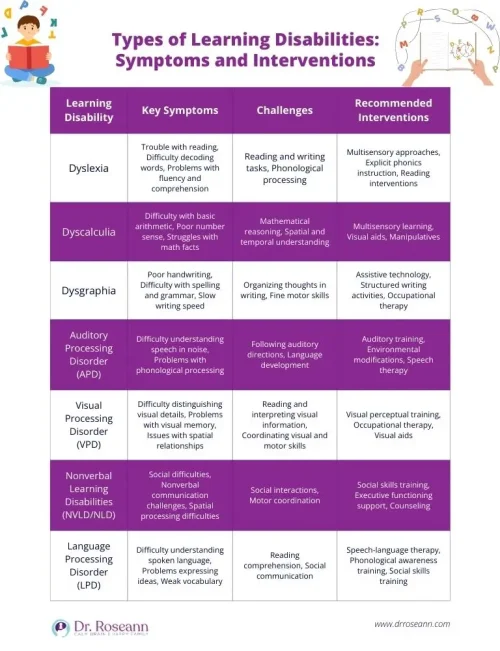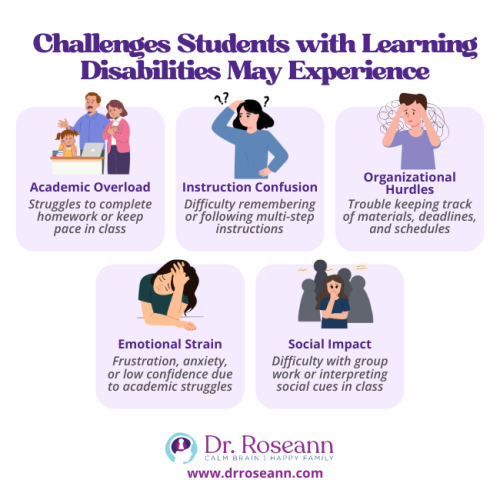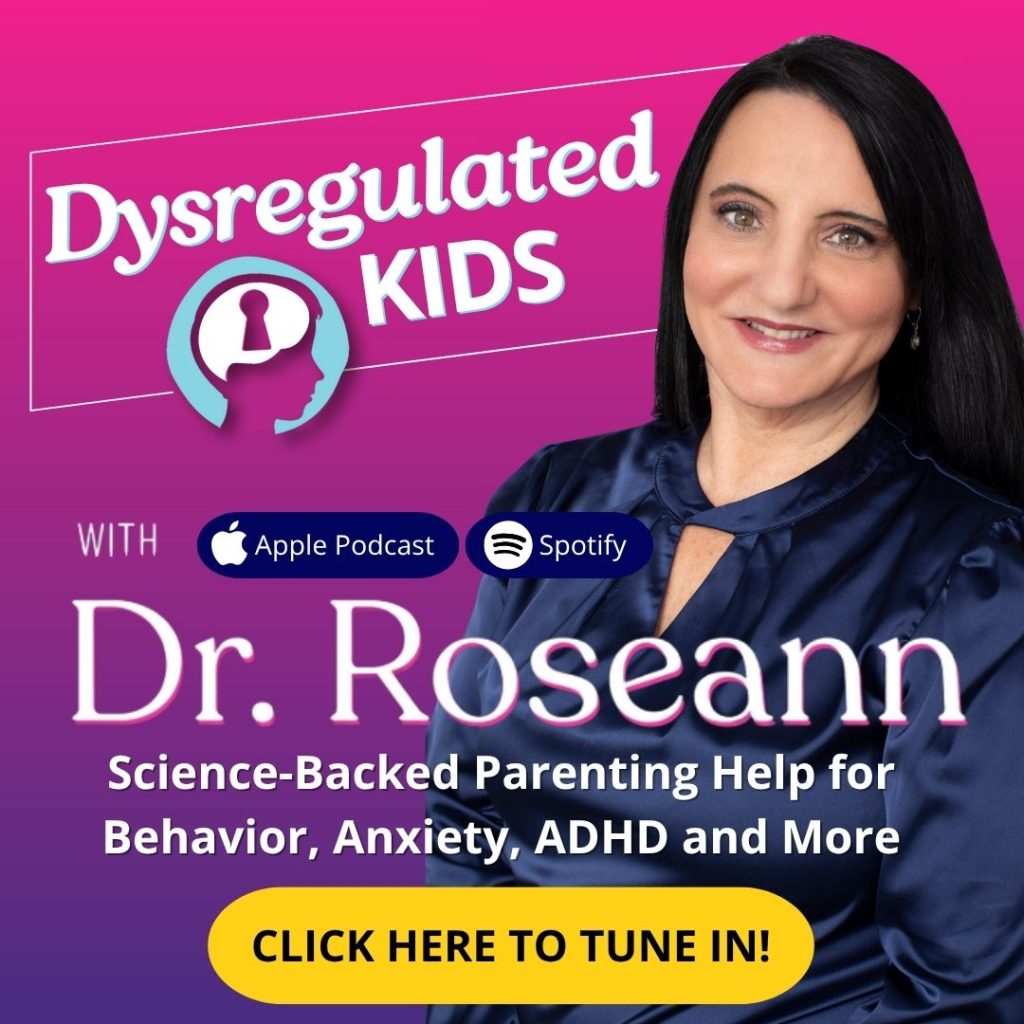Estimated Reading Time: 8 minutes
Every learner’s brain is wired uniquely—but when key learning processes don’t work as expected, bright students can fall behind, lose confidence, and feel misunderstood. That’s where understanding learning disabilities becomes essential.
This complete guide breaks down the 7 primary types of learning disabilities and explains how each affects reading, writing, math, attention, and more. You’ll discover the early signs, evidence-based interventions, and how collaboration between parents and educators can help every child reach their potential.

Diagnosing Learning Disabilities in Children
Identifying a learning disability involves observing your child’s behavior and performance in various settings. Early signs may include:
- Difficulty with reading, writing, or math
- Problems following instructions
- Struggles with memory or attention
- Frustration or anxiety related to school tasks
If you notice these signs, consider seeking an evaluation from a qualified professional.
Seven Main Types of Learning Disabilities
1. Dyslexia
Definition: A language-based learning disability that affects reading, spelling, and writing.
Signs to Watch For:
- Difficulty reading fluently
- Problems with spelling and writing
- Confusing letters or words that look similar
Strategies:
- Use audiobooks and text-to-speech tools
- Break reading tasks into smaller, manageable parts
- Provide extra time for reading assignments
2. Dysgraphia
Definition: A writing disorder that affects handwriting, typing, and spelling.
Signs to Watch For:
- Illegible handwriting
- Difficulty organizing thoughts on paper
- Slow or labored writing
Strategies:
- Allow the use of a computer for writing tasks
- Provide graphic organizers to structure writing
- Encourage the use of voice-to-text software
3. Dyscalculia
Definition: A math learning disability affecting number sense and mathematical reasoning.
Signs to Watch For:
- Difficulty understanding math concepts
- Problems with memorizing math facts
- Struggles with time and money management
Strategies:
- Use visual aids and manipulatives
- Provide real-life examples to explain math concepts
- Offer extra time for math assignments
4. Auditory Processing Disorder (APD)
Definition: A condition that affects how the brain processes spoken language.
Signs to Watch For:
- Difficulty understanding spoken instructions
- Problems distinguishing similar sounds
- Easily distracted by background noise
Strategies:
- Provide written instructions in addition to verbal ones
- Minimize background noise during tasks
- Use visual cues to reinforce spoken information
5. Visual Processing Disorder
Definition: A condition that affects how the brain interprets visual information.
Signs to Watch For:
- Difficulty with reading and writing
- Problems with hand-eye coordination
- Trouble recognizing faces or objects
Strategies:
- Use colored overlays or lenses to reduce visual stress
- Provide large print materials
- Incorporate tactile activities to reinforce learning
6. Nonverbal Learning Disability (NVLD)
Definition: A neurological condition characterized by strong verbal skills but challenges with visual-spatial, motor, and social skills.
Signs to Watch For:
- Difficulty interpreting nonverbal cues
- Problems with coordination and motor skills
- Struggles with abstract reasoning
Strategies:
- Provide explicit instruction on social cues
- Use visual supports to aid understanding
- Encourage participation in social skills groups
7. Executive Functioning Disorder
Definition: A condition that affects the brain’s ability to plan, organize, and complete tasks.
Signs to Watch For:
- Difficulty starting or completing tasks
- Problems with time management
- Struggles with organization and planning
Strategies:
- Use planners and checklists to organize tasks
- Break tasks into smaller, manageable steps
- Provide regular reminders and prompts
How Learning Disabilities Often Affect Children
Children with learning disabilities may experience:
- Academic challenges in reading, writing, or math
- Low self-esteem due to perceived failure
- Social difficulties with peers
- Emotional issues like anxiety or depression
Recognizing these effects early and providing support can help mitigate their impact.
Students with Learning Disabilities: Common Problems
Students with learning disabilities often face:
- Difficulty keeping up with classwork
- Trouble following multi-step instructions
- Challenges with organization and time management
- Increased frustration leading to behavioral issues
Implementing accommodations and support strategies can help address these problems.

Helping Children with Learning Disabilities
Supporting your child involves:
- Early identification and intervention
- Collaboration with educators to implement accommodations
- Providing a structured and supportive home environment
- Encouraging your child’s strengths and interests
Read more: How to Help A Child With Learning Disability
Remember, you’re not alone on this journey. With the right strategies and support, your child can thrive.
Supporting Students with Learning Disabilities at School
At school, support can include:
- Individualized Education Plans (IEPs) or 504 Plans
- Classroom accommodations like extended time or alternative formats
- Specialized instruction tailored to the student’s needs
- Regular communication between home and school
Working together with educators ensures your child receives the support they need to succeed

Next Steps After a Learning Disability Diagnosis
After a diagnosis:
- Develop an action plan with your child’s school
- Seek additional resources or support services
- Monitor your child’s progress and adjust strategies as needed
- Advocate for your child’s needs and rights
Remember, a learning disability is not a reflection of your child’s intelligence or potential. With the right support, your child can overcome challenges and succeed.
Citations
- Prevalence of Developmental Dyscalculia in School-Aged Children
Shalev, R. S. (2000). Developmental dyscalculia: Prevalence and prognosis. European Child & Adolescent Psychiatry, 9(4), 204–209. https://doi.org/10.1007/s007870070009
- Prevalence of Dyslexia Among Primary School Children
Yang, L., Li, C., Li, X., Zhai, M., An, Q., Zhang, Y., Zhao, J., & Weng, X. (2022). Prevalence of developmental dyslexia in primary school children: A systematic review and meta-analysis. Brain Sciences, 12(2), 240. https://doi.org/10.3390/brainsci12020240
- Estimated Prevalence of Nonverbal Learning Disability
Margolis, A. E., et al. (2020). Estimated prevalence of nonverbal learning disability among children and adolescents. JAMA Network Open, 3(5), e204295. https://doi.org/10.1001/jamanetworkopen.2020.4295
Frequently Asked Questions
What is the most common type of learning disability?
Dyslexia is the most common learning disability, affecting approximately 5-10% of the population.
Can learning disabilities be outgrown?
While learning disabilities are lifelong, individuals can develop strategies to manage challenges and succeed academically.
How are learning disabilities diagnosed?
A comprehensive evaluation by a psychologist or educational specialist involves assessments of cognitive, academic, and behavioral functioning.
Dr. Roseann Capanna-Hodge is a licensed mental health expert that is frequently cited in the media:
- She Knows 11 Products Moms of Kids With ADHD Swear By to Maintain Order in the Chaos
- Scary Mommy What Is Self-Regulation In Children, And How Can You Help Improve It?
- CityCurrent: Solutions for Your Kid’s Focus, Anxiety and Behavioral Issues Watch Now…
Always remember… “Calm Brain, Happy Family™”
Disclaimer: This article is not intended to give health advice and it is recommended to consult with a physician before beginning any new wellness regime. *The effectiveness of diagnosis and treatment vary by patient and condition. Dr. Roseann Capanna-Hodge, LLC does not guarantee certain results.
Are you looking for SOLUTIONS for your struggling child or teen?
Dr. Roseann and her team are all about science-backed solutions, so you are in the right place!
©Roseann Capanna-Hodge










